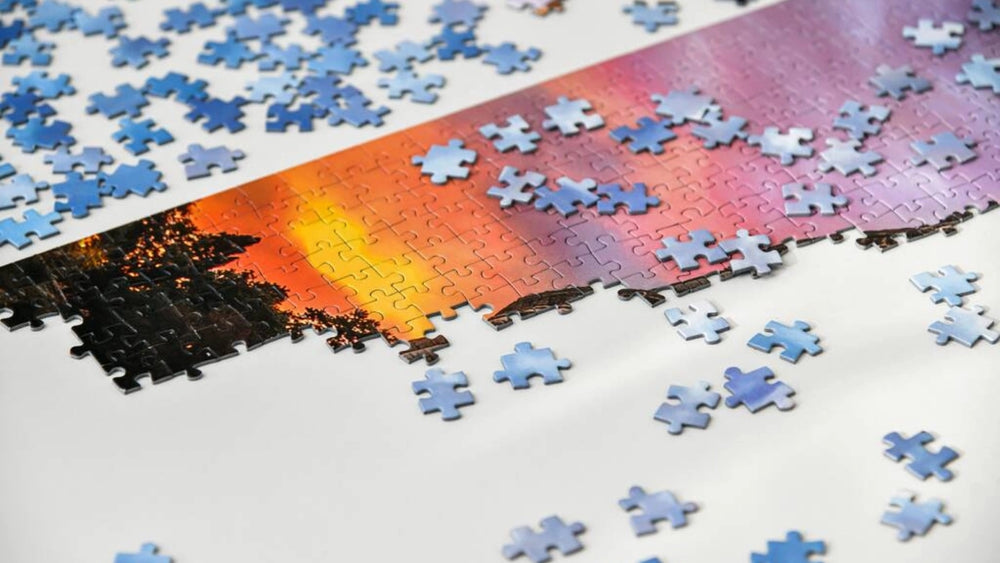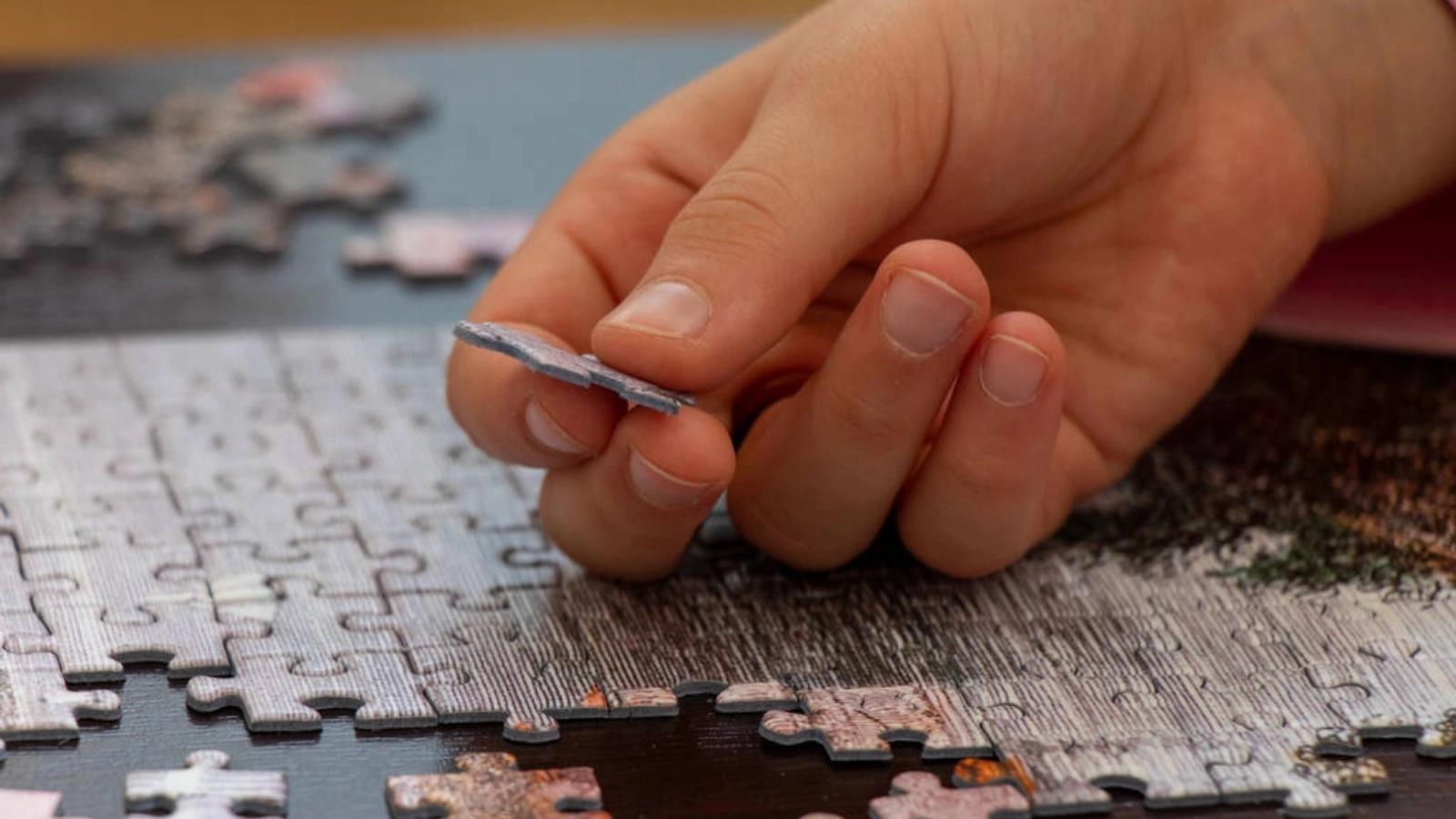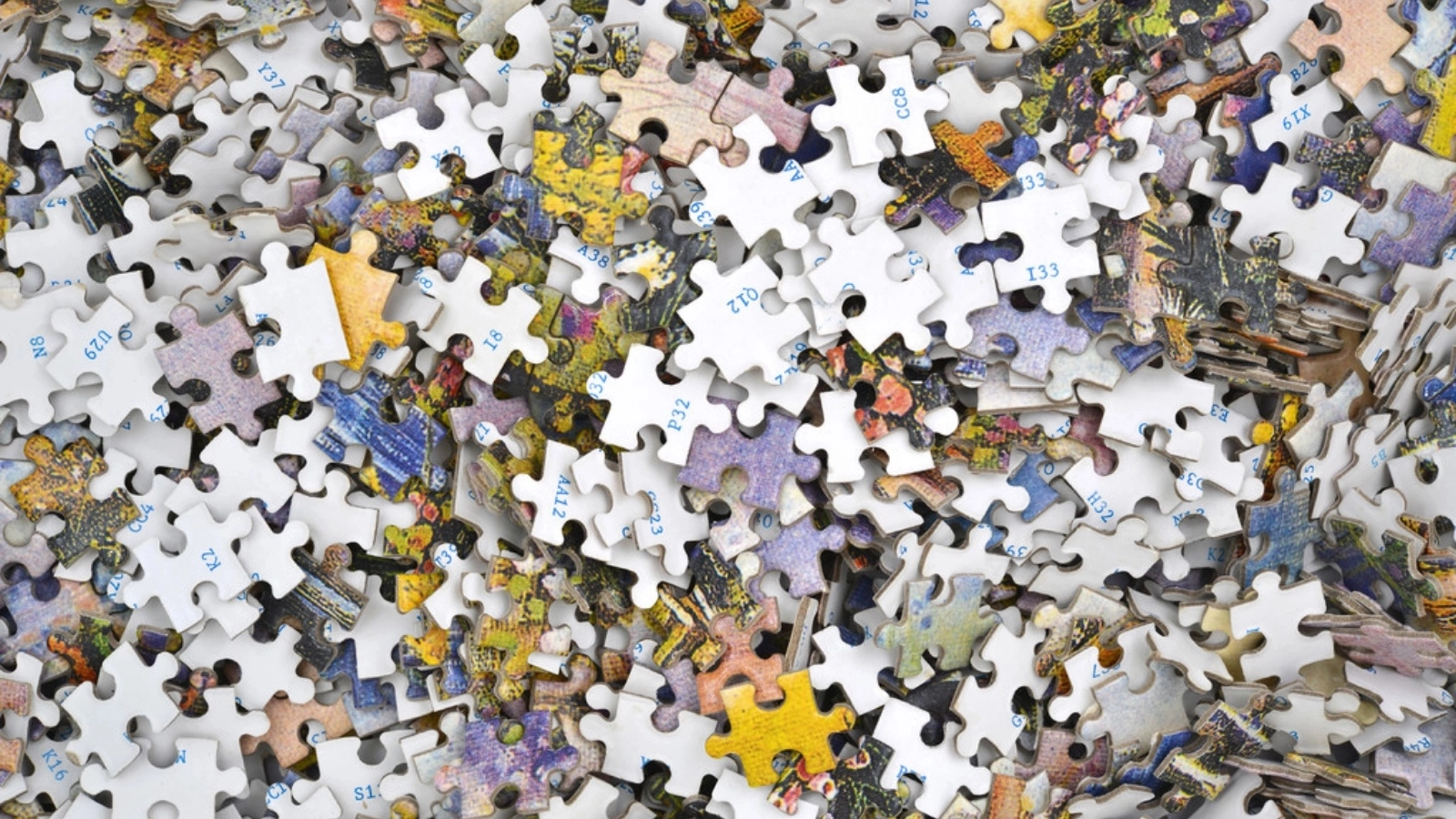
You can master the art of quick puzzle-solving through proven strategies and methodical organization. Whether you're tackling a 100-piece starter or a 5000-piece challenge, your success depends on the initial setup and systematic approach.
By understanding core techniques, you'll transform what might seem like an overwhelming task into a manageable process. Let's explore the essential steps that will help you cut your puzzle completion time in half.
Key Takeaways
- Sort Pieces: Separate pieces by color and pattern into different trays for quick access.
- Build the Border: Assemble the border frame first to set clear boundaries.
- Focus on Patterns: Identify and start with distinctive patterns or images, working outward from these areas.
- Work in Sections: Tackle small sections methodically instead of placing pieces randomly.
- Organize Workspace: Ensure good lighting and tidy your workspace, with all pieces visible and reachable.
How to Solve Puzzles Quickly: Tips for Solving Jigsaw Puzzles

If you find yourself struggling with jigsaw puzzles, don't worry! These tips will guide you to become a faster puzzle solver.
Tip 1: Choose the Right Puzzle
If you're new to puzzle solving, start with a 500-piece jigsaw puzzle to build confidence and develop effective techniques. Look for puzzles featuring vibrant colors and distinct patterns. These will help you identify and sort pieces more efficiently.
Ensure your chosen puzzle board has clear, high-quality images that won't strain your eyes during assembly.
Remember to puzzle check the difficulty level before purchasing. This allows you to progress gradually to more challenging options.
Tip 2: Set Up Your Workspace
A proper workspace serves as the foundation for quick puzzle-solving success. You'll need a defined space larger than your puzzle's dimensions, ideally with natural light for optimal visibility. Place a puzzle mat or board on a flat surface to create a portable, stable platform for your work.
Don't forget to set up sorting trays to organize pieces by color, pattern, and type later. Keep edge pieces separate; you'll use these first to build your frame.
Tip 3: Build the Frame First
Building the outer frame of a puzzle provides the essential foundation for quick completion.
Start by identifying all border pieces. They typically have at least one straight edge type. Sort these pieces into groups based on colors or patterns to streamline assembly.
Work systematically around the frame, connecting pieces that clearly match. Once you've completed the frame, you'll have established clear dimensional relationships for interior sections.
Tip 4: Sort Other Pieces into Similar Colors
After establishing the puzzle's frame, color sorting becomes your next logical step for rapid completion.
Sort the pieces into distinct piles based on dominant colors and patterns. This systematic approach lets you focus on specific sections while minimizing confusion and misplacement.
Create separate groupings for pieces with similar shades, textures, and distinctive features. By maintaining organized color groups, you'll work more efficiently.
Tip 5: Connect Small Sections
Connecting those smaller segments requires a strategic approach. Look for distinctive patterns or images that span across separate sections of the puzzle, as these serve as natural connection points.
When building the puzzle, align completed segments near their approximate final positions based on your reference image. Match the edges of each puzzle piece carefully. Pay attention to both shape and design continuity.
If you're stuck, examine the part of the puzzle where two sections should meet. Focus on unique color transitions or pattern details that can guide proper placement.
Tip 6: Collect Unique Pieces
Identifying and collecting special pieces is a key step in efficient puzzle-solving. Set aside pieces with unique characteristics. Focus on those that are rare, difficult to place, or have irregular shapes. Look for distinctive features like text, numbers, or unusual patterns.
Use a magnifier to examine pieces that appear similar. So you can note subtle differences in their patterns or shapes. This careful organization creates a valuable reference collection you can turn to when you're stuck.
How to Stay Motivated and Focused During Assembling

During your journey with jigsaw puzzles, keeping your motivation and concentration intact can make a significant difference. The following are three practical tips and tricks.
Set Goals
Set clear goals to stay focused and make steady progress. Break down tasks into manageable steps that fit your skills and schedule. For jigsaw puzzles, set milestones like completing the border or certain sections within a specific time.
Take a Break
Take regular breaks every 45-60 minutes to avoid mental fatigue. Step away from the puzzle and do different activities to recharge.
When you return, you'll often notice missed pieces and new patterns. Don't forget to make sure you've allocated enough room for the whole puzzle.
Use these intermittent breaks to stretch, hydrate, and celebrate the sections you've completed so far.
Celebrate Progress
Solving puzzles takes patience, but celebrating small wins helps keep you motivated. As you fit pieces together, recognize each success, like finding a difficult piece or finishing a tough section.
Set specific goals as you work through the puzzle box. You'll puzzle like a pro by sharing your achievements with fellow enthusiasts, either in person or through online communities.
When you complete a puzzle, take time to reflect on your strategy and progress. Thus, you can apply these insights to future projects.
Conclusion
To solve a puzzle efficiently, choose the right difficulty, organize your workspace, and start with the frame. Stay focused by setting goals and taking breaks. With regular practice, you'll improve your speed and skill.
FAQs
What Is the Fastest Way to Complete a Puzzle?
Organize your workspace, sorting pieces by color, assembling borders, and focusing on distinct sections. Don't forget to align completed segments with the frame while systematically connecting them.
How to Solve a 1000 Piece Puzzle Quickly?
You can solve a 1,000-piece puzzle faster by sorting pieces by color, building the border first, creating sub-assemblies of similar sections, and systematically connecting them. Remember to take breaks to maintain focus.
How Do I Glue a Puzzle?
Assemble the puzzle on a flat surface and place wax paper underneath. Then, apply puzzle glue evenly on the front using a brush or sponge, and let it dry for at least 24 hours. Optionally, apply glue to the back for extra reinforcement before framing or displaying.
How Do I Frame a Puzzle?
After gluing the puzzle, measure it to select a suitable frame. Place the puzzle on the frame's backing, ensuring it's centered and secure. Cover it with the frame's glass or acrylic, and then assemble the frame. Finally, hang or display it as desired.